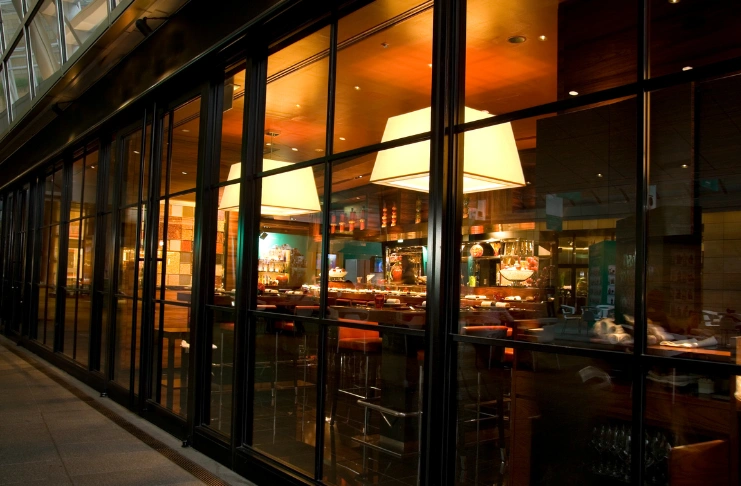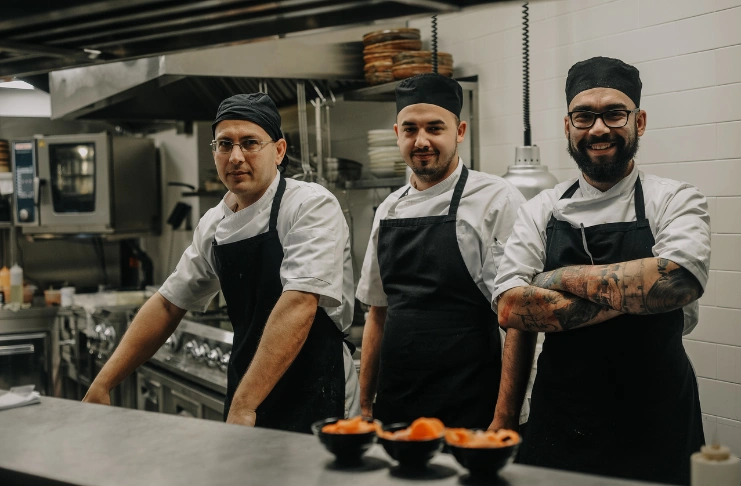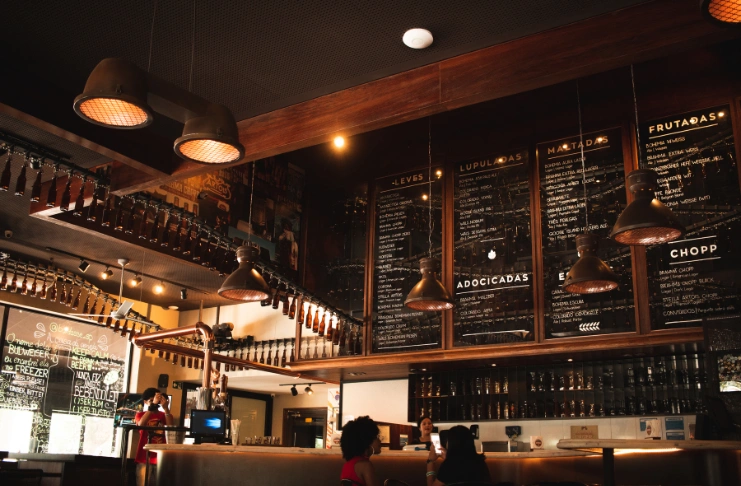Ever wondered why some restaurants become local favorites while others shut down within months? The restaurant industry is brutal, with statistics showing that nearly 60% of new restaurants fail within their first year, and 80% don’t make it past five years.
But here’s the truth: most failures aren’t due to bad luck; they stem from avoidable mistakes experienced restaurant owners have learned to sidestep.
That’s where understanding the key do’s and don’ts of running a restaurant can mean the difference between becoming a success story or another cautionary tale.
What Makes a Restaurant Successful?

The restaurant industry is notoriously unforgiving. Margins are narrow, customer expectations are high, and competition is unrelenting. Yet despite these challenges, certain establishments not only survive but thrive. Their success is not accidental. It is built on a precise blend of operational discipline, strategic clarity, and cultural intelligence.
Here are a few things they get right:
A Well-Defined Concept
A successful restaurant begins with a clear, focused concept that resonates with its target audience. This concept applies to everything from the type of cuisine and service style to the atmosphere and price point. Restaurant owners who understand that trying to appeal to everyone often results in appealing to no one are the ones really making it big.
Your restaurant concept should answer fundamental questions: What experience are you creating? Who are your ideal customers? What makes your offering unique in a crowded market? These decisions shape every aspect of your business, from menu development to staffing decisions.
Location

Location can make or break a restaurant business. The best food in the world won’t save a restaurant hidden from potential customers or in an area with insufficient foot traffic.
Smart restaurant owners analyze demographics, competition density, parking availability, and rent-to-revenue ratios before committing to a location.
Keep in mind that a slightly more expensive location with higher visibility and better accessibility often generates significantly more revenue than a cheaper, hidden spot. The goal is to find the sweet spot where rent costs align with revenue potential.
Financial Foundation
Successful restaurants operate on solid financial principles. They understand that the food industry operates on thin profit margins, making cost control essential for survival. This calls for religiously tracking every expense and maintaining a healthy cash flow.
Many new restaurant ventures fail because owners underestimate initial costs or lack sufficient working capital to weather the inevitable slow periods. Industry experts recommend having enough money to cover at least six months of operating expenses beyond opening day.
Service Excellence

The best restaurants don’t treat service as an add-on. They design it as a core operational system. From the first greeting to the final payment, top operators create a deliberate sequence of actions that makes guests feel recognized, accommodated, and respected.
Most importantly, they get standardization right. They build clear service protocols around timing, attentiveness, complaint resolution, and table touchpoints. These protocols are trained into the culture and reinforced daily. Nothing is left to chance.
They also empower staff. When employees have the authority to resolve issues on the spot, guests experience less friction and more trust. This autonomy, backed by structure, creates consistent hospitality that keeps people returning.
INDUSTRY INSIGHT
| Customer retention is among the most impactful factors in a restaurant’s financial success. Research from Harvard Business Review and Bain & Company shows that increasing customer retention by just 5% can boost profits by 25-95%, making it far more cost-effective than chasing new customers through expensive marketing efforts. The National Restaurant Association reports that repeat customers account for up to 70% of total sales in some establishments, further proving their importance. Gartner’s research reinforces this by stating that 80% of business profits come from just 20% of existing customers. That’s why prioritizing personalized service, loyalty programs, and engagement strategies is non-negotiable for sustainable growth and long-term profitability. |
Team and Culture
High-performing restaurants invest in people before they invest in promotions. They hire for attitude, train for excellence, and lead with clarity.
What they get right is alignment. Every hire reflects their culture. Operators prioritize staff who understand hospitality at a value level and care about the guest, the team, and the brand.
Retention is treated as a strategy. These businesses pay competitively, offer advancement, and build workplaces where professionalism is expected and appreciated. A strong internal culture directly improves the guest experience. Energized teams deliver sharper service, lower turnover, and higher consistency.
Consistent Operations
The strongest restaurants win by removing variables. They understand that guests return not for occasional brilliance but for predictable execution.
They develop systems that lock in quality—recipes, portioning, ticket timing, plating, and prep. Whether the head chef is present or not, the food arrives as promised.
They also optimize back-of-house and front-of-house coordination. Prep stations run with clockwork efficiency. FOH staff are trained to pace the room, not just serve it. The result is an operation where quality control isn’t dependent on individual talent but embedded in the process.
Do’s and Don’ts of Running a Restaurant

Success in the restaurant industry boils down to precision. The difference between a full house and an empty dining room often hinges on decisions made months before the first customer walks in. Below are the dos and don’ts of successful restaurant management:
Do: Master Your Food Costs
Track every ingredient, every portion, and every penny. Successful restaurant management requires knowing your food costs down to the cent. Calculate the cost of each menu item and price accordingly to maintain healthy profits.
Monitor your food expenses weekly. Use inventory management software to track waste, theft, and overordering. Many restaurants discover they can save money simply by reducing portion sizes slightly or finding more cost-effective suppliers for seasonal ingredients.
Set a target food cost percentage and stick to it. Most successful restaurants keep food costs between 25% and 40% of revenue.
Don’t: Ignore Your Numbers
Never run your restaurant based on gut feelings alone. Too many restaurant owners avoid looking at their financial reports until it’s too late. Check your daily sales, track your profit margin, and understand where every dollar goes.
Failing to monitor key performance indicators is like driving blindfolded. To make informed decisions, you need to know your average ticket size, table turnover rate, and cost per customer acquisition.
Do: Build a Strong Team

Invest in your employees from day one. Pay competitive wages, provide proper training, and create advancement opportunities. A stable team reduces hiring costs, improves service quality, and builds the personal connection that keeps guests coming back.
Treat every team member as an essential part of your success. Employees who feel valued provide better service, stay longer, and become ambassadors for your brand.
Don’t: Underestimate Staffing Costs
Labor costs typically represent 25-35% of revenue in most restaurants. New restaurant owners often underestimate these expenses and cannot maintain adequate staffing levels.
Avoid the temptation to cut staff during slow periods if it compromises service quality. Customers notice when you’re understaffed, and poor service drives away repeat guests faster than anything else.
Do: Create a Strategic Menu
Design your menu as a profit-generating tool. Use menu engineering principles to highlight high-margin items and guide customer choices through strategic placement and descriptions.
Keep your menu focused. Many restaurants fail because they try to serve too many menu items, leading to increased food waste, higher inventory costs, and inconsistent quality. A smaller, well-executed menu often outperforms an extensive one.
Test new menu items before adding them permanently. Monitor which dishes sell well and which sit in the kitchen, costing you money.
Don’t: Change Your Menu Too Frequently

Customers develop favorites, and constantly changing menu items can frustrate regular patrons. Seasonal ingredients can provide variety without completely overhauling your offerings.
Frequent menu changes also increase training costs, confuse restaurant staff, and can lead to inventory management nightmares.
Do: Focus on Customer Experience
Every interaction matters. Manage every touchpoint from the moment potential customers see your restaurant to when they leave. This includes your dining room atmosphere, service speed, food presentation, and even how you handle complaints.
Respond to online reviews professionally and promptly. Today’s diners check reviews before choosing where to eat, making your online reputation crucial for attracting new customers.
Don’t: Neglect Marketing
Did you know 87% of consumers read online reviews before choosing where to dine, and 38% of them would never choose a place with an average rating below four stars? That kind of visibility translates directly into revenue.
Your food might be amazing, but if people don’t know about your restaurant, they can’t become your customers. Develop a marketing strategy that includes social media, local partnerships, and community engagement.
Many small business owners think great food alone will bring success. While quality is essential, consistent marketing efforts are needed to build awareness and attract patrons to your establishment.
Do: Manage Cash Flow Carefully
Restaurant business cash flow is often unpredictable. Maintain reserves for slow seasons, unexpected repairs, and opportunity investments. Track daily cash positions and project future needs.
Negotiate payment terms with suppliers when possible. Even minor improvements in payment timing can significantly impact your working capital.
Don’t: Expand Too Quickly

Success with one location doesn’t guarantee success with multiple locations. Each new restaurant requires significant capital investment, management attention, and operational systems. Focus on making your first restaurant highly profitable before considering expansion.
Many restaurant owners expand before perfecting their concept, systems, and team. This often leads to quality decline across all locations and can threaten the entire business.
Do: Embrace Technology Wisely
Use technology to improve efficiency, not replace human connection. A good POS system can streamline ordering, track inventory, and provide valuable sales data. When implemented thoughtfully, online ordering and delivery services can expand your reach.
Remember: Technology should support your service, not complicate it. Choose systems that your staff can easily learn and that genuinely improve the customer experience.
Don’t: Cut Corners on Quality
Never compromise on food safety, ingredient quality, or cleanliness to save money. While these shortcuts might reduce costs temporarily, they can also destroy your reputation and even close your restaurant.
Use fresh ingredients when possible, maintain proper food storage temperatures, and keep your establishment spotlessly clean. Your reputation depends on consistent quality, and recovering from a damaged reputation is far more expensive than maintaining high standards.
Do: Plan for the Unexpected

Build contingency plans for staff shortages, equipment failures, supply chain disruptions, and economic downturns. Recent years have shown how quickly external factors can impact restaurant operations.
Maintain relationships with backup suppliers, cross-train employees for multiple positions, and keep emergency funds available. Successful restaurants prepare for challenges before they arise.
Don’t: Ignore Customer Feedback
Negative feedback often contains valuable insights for improvement. Address complaints promptly and professionally, both in person and online. Use customer suggestions to refine your offerings and service.
Ignoring problems doesn’t make them disappear; it makes them worse. Customers who feel heard and valued often become your most loyal advocates.
Conclusion
Running a successful restaurant requires more than great food and good intentions. It demands strategic thinking, operational discipline, and unwavering attention to detail and big-picture goals.
The restaurants that thrive understand that success comes from consistently executing fundamentals: maintaining quality, controlling costs, building strong teams, and creating experiences that turn first-time visitors into repeat guests. They treat their business as both an art and a science, balancing creativity with data-driven decision-making.
Whether you’re planning to open your first restaurant or looking to improve an existing operation, focus on building strong foundations rather than chasing quick wins. Restaurants that survive and thrive view challenges as opportunities to strengthen their operations and deepen their connection with the customers they serve.
Your success depends not just on what you do but also on how consistently and thoughtfully you execute these core principles every day.
Frequently Asked Questions
1. How to successfully run a restaurant?
Success requires mastering five core areas: developing a clear concept, choosing the right location, maintaining strict financial controls, building a strong team, and delivering consistent quality. Focus on systems that ensure reliable execution rather than depending on individual performance.
2. What are the 4 P’s of a restaurant?
The 4 P’s are Product (your food and menu), Place (location and atmosphere), Price (value proposition and pricing strategy), and Promotion (marketing and customer acquisition). Each element must align with your target market and support your overall business strategy.
3. What are the three C’s in a restaurant?
Consistency, Cleanliness, and Customer service are fundamentals that determine whether guests return and recommend your restaurant to others. Master these basics before focusing on advanced strategies.
4. What is the hardest part of running a restaurant?
Managing cash flow while maintaining quality standards. Restaurants operate on thin margins with unpredictable revenue, making it challenging to balance cost control with the investment needed for excellent food and service.
5. What is the 30/30/30/10 rule for restaurants?
This budgeting guideline suggests allocating 30% of revenue to food costs, 30% to labor, 30% to overhead expenses (rent, utilities, insurance), and 10% to profit. While percentages vary by concept, this framework helps maintain financial balance.
6. How to make your restaurant successful?
Focus on operational excellence in every area: develop systems for consistent food quality, train staff thoroughly, control costs meticulously, and create memorable customer experiences. Success comes from executing basics exceptionally well, not from complicated strategies.
7. What is the most common mistake that restaurants make?
Underestimating operating costs and overestimating revenue projections. Many owners lack sufficient working capital to sustain operations during inevitable slow periods, leading to cash flow crises within the first year.
8. What is the most common complaint at restaurants?
Slow service tops the list, followed by food quality issues and inattentive staff. Most complaints stem from inconsistent execution rather than fundamental concept problems, making them preventable through proper training and systems.
9. Do and don’ts of a restaurant?
Do: Focus on consistent quality, train your team thoroughly, track financial metrics daily, and respond to customer feedback.
Don’t: Cut corners on food safety, ignore negative reviews, expand too quickly, or run the business without proper financial controls.
10. What is the key to a successful restaurant?
Consistency across all operations. Customers return when they know what to expect—the same quality food, service, and experience every visit. This requires documented procedures, ongoing training, and systems that work regardless of who’s working.
11. How do restaurants attract more customers?
Combine excellent food and service with strategic marketing. Build a strong online presence, encourage positive reviews, engage with the local community, and create experiences worth discussing. Word-of-mouth remains the most powerful marketing tool in the restaurant industry.





